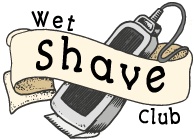Ever wondered how to trim your stomach hair effectively? Whether you’re aiming for a cleaner look, enhanced aesthetics, or simply more comfort, managing stomach hair can be straightforward with the right approach.
Trimming stomach hair is not just about appearance; it can also improve hygiene and make you feel more confident. The key lies in using the proper tools and techniques to ensure a smooth and irritation-free result.
In this guide, we’ll explore the best methods to trim your stomach hair, from choosing the right trimmer to aftercare tips that keep your skin feeling great.
Whether you prefer a clean shave or a neatly groomed look, understanding how to trim your stomach hair can make a significant difference in your grooming routine.
Let’s dive into the steps to achieve a well-groomed and comfortable stomach area.
Natural Variations in Stomach Hair
Stomach hair is a natural part of human anatomy, and its presence varies widely among individuals due to several factors. Here are some key points to consider:
Genetics
Your genetic makeup plays a significant role in determining the amount, thickness, and pattern of stomach hair. Family traits often predict how much stomach hair you might have.
Hormones
Hormonal levels, particularly androgens like testosterone, influence hair growth. Variations in these hormone levels can lead to differences in hair density and distribution.
Ethnicity
Different ethnic backgrounds are associated with varying hair growth patterns. For example, individuals of Mediterranean or Middle Eastern descent often have thicker and more abundant body hair compared to those of East Asian descent.
Age
Hair growth patterns can change over time. Puberty typically triggers an increase in body hair, while aging can lead to either an increase or decrease in hair density.
Health Conditions
Certain health conditions, such as polycystic ovary syndrome (PCOS) or hormonal imbalances, can affect hair growth, leading to more or less stomach hair than usual.
Lifestyle Factors
Diet, stress levels, and overall health can also impact hair growth. Nutrient deficiencies or high stress can potentially alter hair density and growth patterns.
Understanding these variations helps in normalizing the wide range of stomach hair appearances and reducing any associated stigma or discomfort. Everyone’s body is unique, and these natural differences are perfectly normal.
Preparing for Trimming Stomach Hair

Preparing to trim your stomach hair involves several important steps to ensure a smooth, safe, and effective grooming session. Here’s a detailed guide on what to do before trimming your stomach hair:
Gather the Right Tools
- Trimmer or Clippers: Choose a high-quality trimmer with adjustable length settings.
- Scissors: Use small, sharp scissors for precision trimming in sensitive areas.
- Mirror: A handheld or wall-mounted mirror can help you see what you’re doing.
- Comb: A fine-toothed comb can help lift and separate the hair for even trimming.
Clean Your Skin
- Shower: Start with a warm shower to cleanse your skin and hair. The warmth will soften the hair, making it easier to trim.
- Exfoliate: Gently exfoliate your stomach area to remove dead skin cells and prevent ingrown hairs. Use a mild scrub or exfoliating glove.
- Dry Thoroughly: Pat your skin dry with a clean towel. Make sure the area is completely dry to avoid any snagging or pulling during trimming.
Sanitize Your Tools
- Clean the Trimmer: Disinfect the trimmer blades with rubbing alcohol to prevent any infections.
- Scissors: Wipe the scissors with alcohol wipes or a cotton ball soaked in rubbing alcohol.
By following these steps, you can prepare your stomach area for trimming, ensuring a more comfortable and effective grooming session. Proper preparation helps reduce the risk of nicks, cuts, and irritation, leaving your skin smooth and well-groomed.
Trimming Stomach Hair: Step-by-step Process
Trimming stomach hair can be a straightforward process if you follow the right steps. Whether you’re aiming for a clean look or just a neat trim, here’s a comprehensive guide to help you through each stage of the process.
Prepare Your Skin and Hair
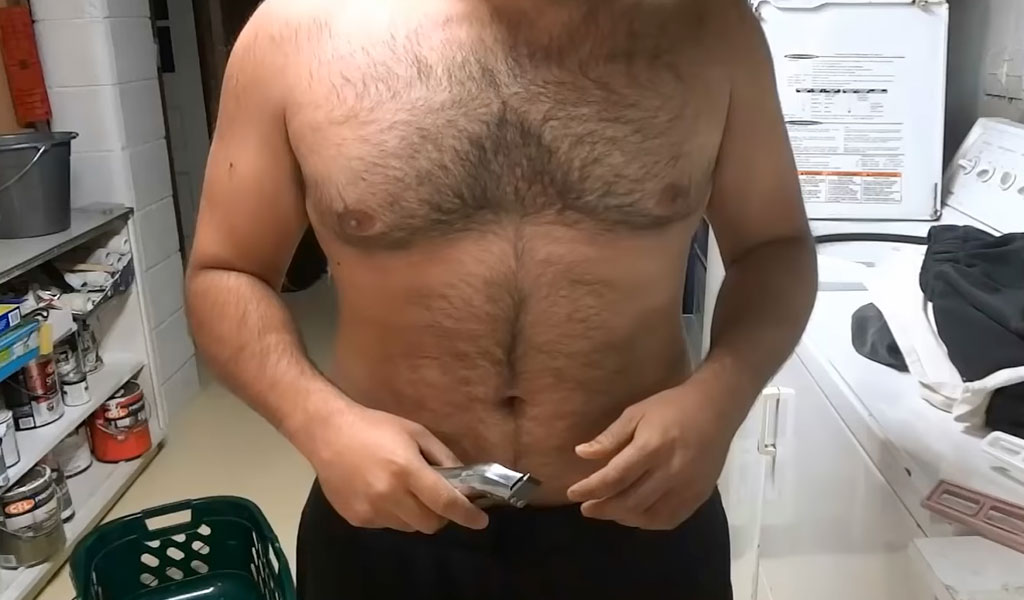
Preparation is key to a smooth and irritation-free trimming experience. Begin by taking a warm shower. The heat will soften your hair and open up your pores, making the hair easier to trim.
After showering, gently exfoliate your stomach area using a mild scrub or an exfoliating glove. This step helps remove dead skin cells and reduces the risk of ingrown hairs.
Once you’ve finished exfoliating, pat your skin dry with a clean towel. Make sure the area is completely dry before you start trimming to prevent the trimmer from snagging or pulling the hair.
Set Up in a Well-Lit Area
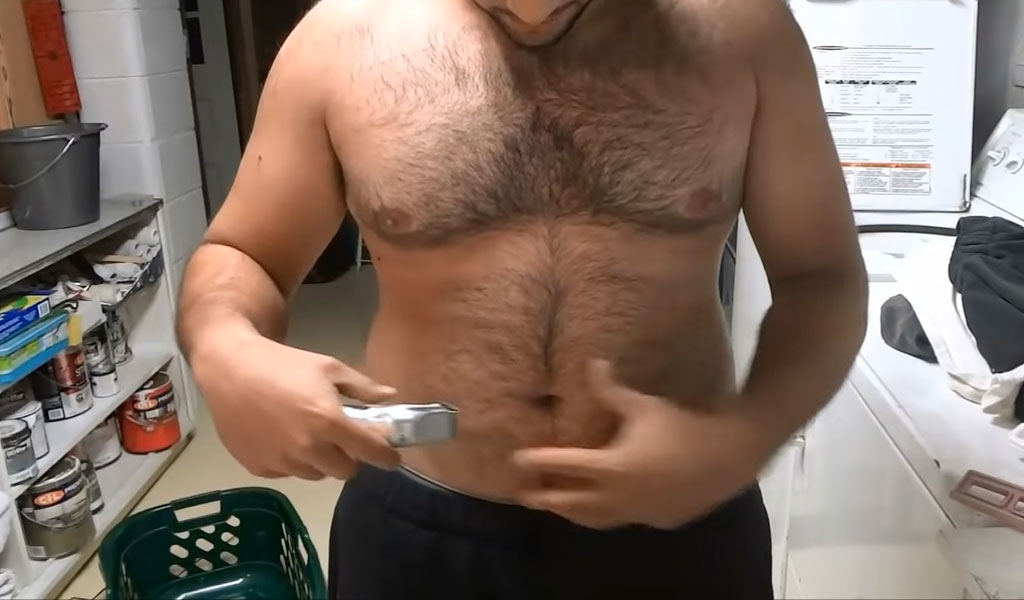
Good lighting is essential for a precise trim. Find a well-lit area where you can clearly see your stomach. Natural light is ideal, but if that’s not possible, make sure you have a bright, artificial light source.
Position yourself in front of a mirror so you can see what you’re doing. A handheld mirror can be useful for checking hard-to-see areas.
Start with a Longer Setting
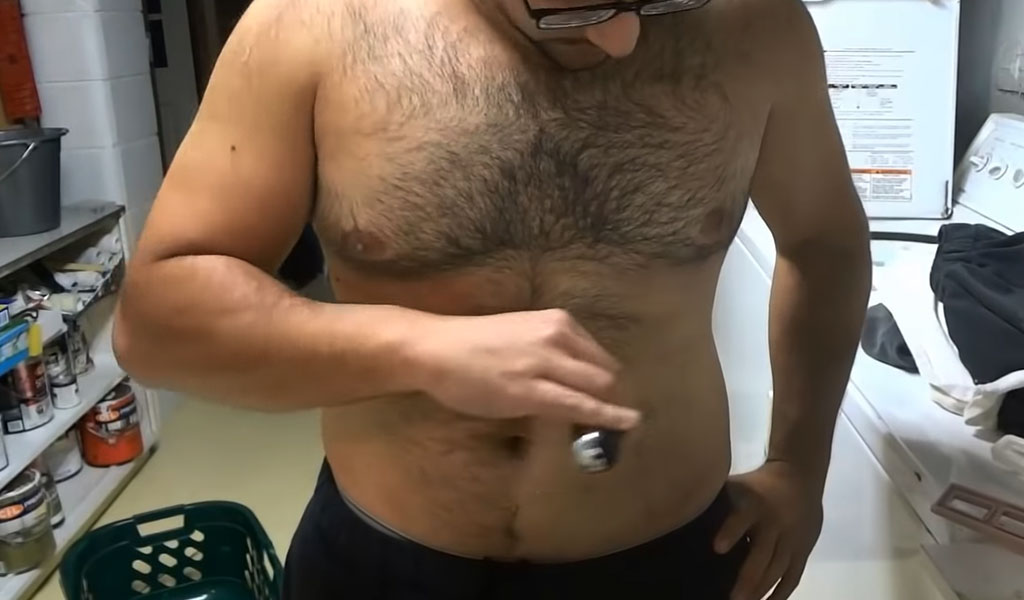
If you’re using a trimmer, it’s best to start with a longer guard setting. This allows you to get a feel for the trimmer and prevents you from cutting the hair too short initially.
Begin trimming by moving the trimmer in the direction of hair growth. This helps reduce the risk of skin irritation and provides a more even trim. If you’re using scissors, start by combing through the hair to lift and separate it.
Then, carefully trim small sections, being mindful of the length.
Trim in Sections
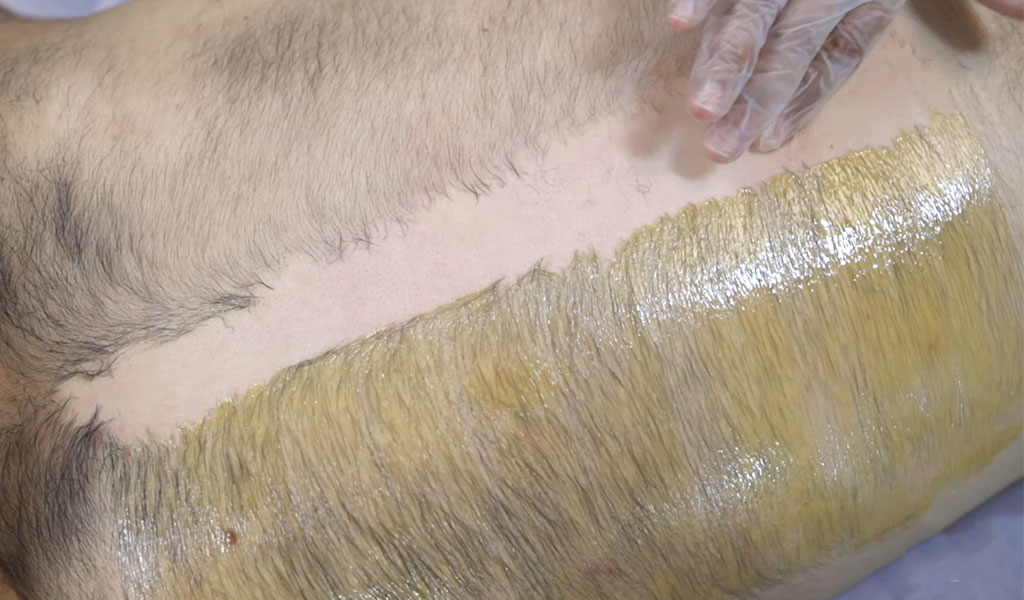
To ensure an even trim, work in small sections. Focus on one part of your stomach at a time, trimming evenly before moving on to the next section.
This methodical approach helps avoid missed spots and ensures a consistent length across the entire area. If you find any particularly long hairs, use scissors for precision trimming.
Check Your Progress Frequently
Periodically check your progress in the mirror. This helps you ensure that the trim is even and that you’re not cutting too much hair.
Use your hand to feel for any uneven spots or areas that need more attention. Taking your time and checking frequently helps avoid mistakes and ensures a more professional-looking result.
Clean Up and Moisturize
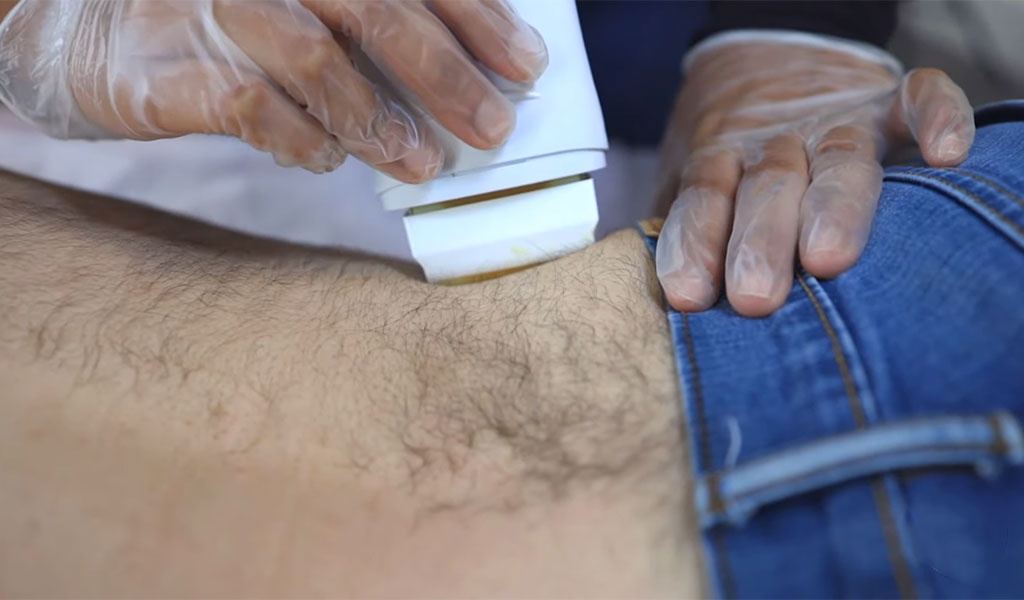
Once you’ve finished trimming, clean up any loose hair with a damp cloth or by taking a quick rinse. Pat your skin dry with a clean towel. Afterward, apply a light, non-greasy moisturizer to the trimmed area.
This helps soothe the skin and reduce any potential irritation. Avoid using heavy or fragranced lotions immediately after trimming, as these can cause irritation.
Aftercare Tips
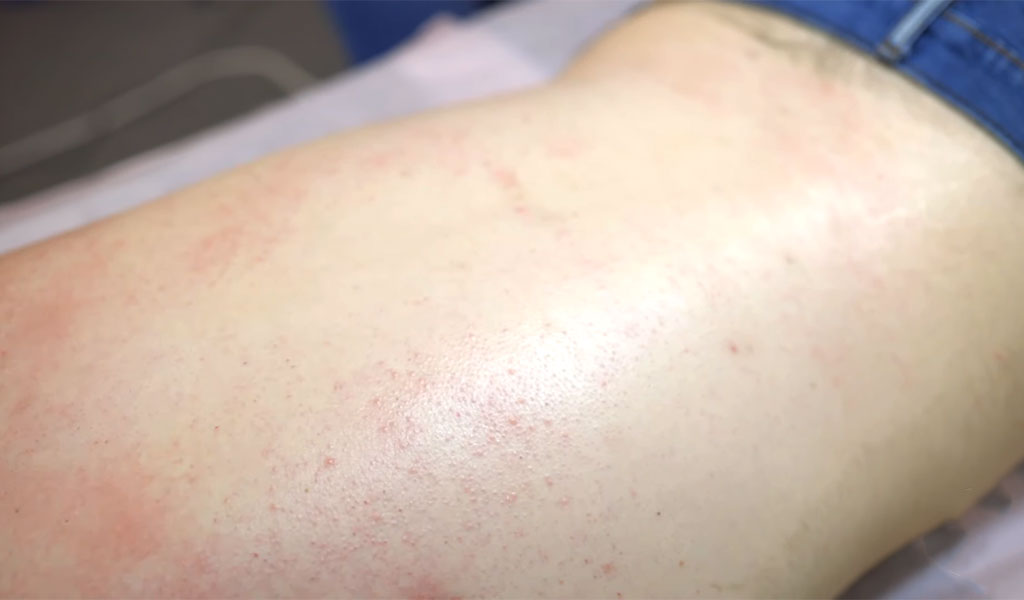
Proper aftercare ensures your skin remains healthy and irritation-free. Keep the trimmed area clean and dry. If you experience any redness or irritation, apply a soothing aloe vera gel or a mild, fragrance-free lotion.
Avoid activities that may cause excessive sweating or friction on the trimmed area for the first 24 hours. This helps prevent any irritation or ingrown hairs.
Maintain Your Trim
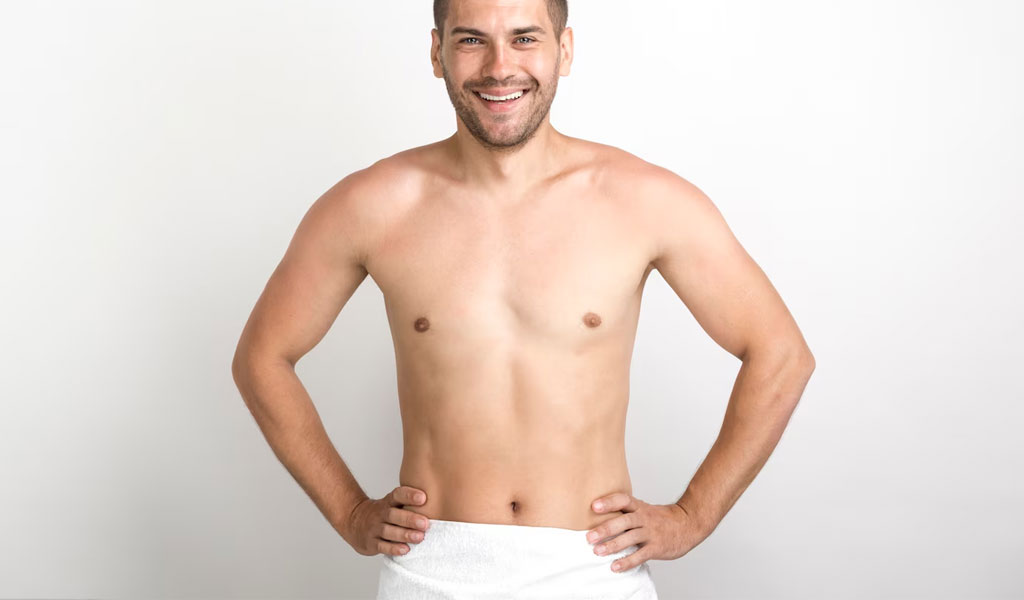
To keep your stomach hair looking neat, trim regularly. The frequency will depend on your personal hair growth rate, but generally, every two to four weeks is a good interval.
Regular maintenance trims are quicker and easier than letting the hair grow out completely between trims.
Trimming stomach hair can be a simple and effective part of your grooming routine when done correctly.
By gathering the right tools, preparing your skin, working in a well-lit area, and following a careful, step-by-step approach, you can achieve a neat and comfortable trim.
Remember to sanitize your tools, start with a longer setting, trim in sections, and check your progress frequently to ensure the best results. Proper aftercare and regular maintenance will help keep your skin smooth and irritation-free, leaving you feeling confident and well-groomed.
Aftercare for Trimming Stomach Hair
Proper aftercare is essential to keep your skin healthy and free from irritation after trimming your stomach hair. Here are some detailed aftercare steps to follow:
Clean the Area
Immediately after trimming, rinse your stomach with lukewarm water to remove any loose hairs and debris. Use a mild, fragrance-free soap to cleanse the area gently. Avoid hot water as it can further irritate the skin.
Pat Dry
After washing, pat your skin dry with a clean, soft towel. Avoid rubbing the area, as this can cause friction and lead to irritation. Ensure the area is completely dry before applying any products.
Apply a Soothing Moisturizer
Once your skin is dry, apply a light, non-greasy moisturizer to soothe the skin. Look for products containing ingredients like aloe vera, chamomile, or calendula, which are known for their calming properties.
Avoid heavy or fragranced lotions, as these can clog pores and cause irritation.
Use Antiseptic Products
To prevent infections or ingrown hairs, consider applying an antiseptic product to the trimmed area. Witch hazel or tea tree oil can be effective choices.
Apply a small amount to a cotton pad and gently dab it onto your skin. These products help to keep the skin clean and reduce the risk of bacterial infections.
Wear Loose Clothing
After trimming, wear loose-fitting clothing to allow your skin to breathe and minimize friction. Tight clothes can rub against the freshly trimmed skin, causing irritation or even ingrown hairs. Opt for breathable fabrics like cotton to keep the area comfortable.
Avoid Sweating
For the first 24 hours after trimming, try to avoid activities that cause excessive sweating, such as intense workouts or spending time in hot environments. Sweat can irritate the freshly trimmed skin and increase the risk of infections.
Monitor for Irritation
Keep an eye on your skin for any signs of irritation, such as redness, bumps, or itchiness. If you notice any of these symptoms, apply a soothing gel like aloe vera to the affected area.
In case of persistent irritation, consider consulting a dermatologist for appropriate treatment options.
Regular Maintenance
To keep your stomach hair looking neat and prevent irritation, maintain a regular trimming schedule. Trimming every two to four weeks can help you avoid the discomfort of longer hair and reduce the likelihood of ingrown hairs.
Consistent maintenance trims are generally quicker and less irritating than infrequent, more extensive grooming sessions.
Taking care of your skin after trimming stomach hair is crucial for preventing irritation and ensuring a smooth, comfortable result.
By following these aftercare steps, cleaning the area, patting it dry, applying a soothing moisturizer, using antiseptic products, wearing loose clothing, avoiding excessive sweating, monitoring for irritation, and maintaining regular trims, you can keep your skin healthy and irritation-free.
Wrapping Up
Trimming stomach hair can enhance your appearance and boost your confidence when done correctly. By following a structured approach, preparing your skin, using the right tools, and taking aftercare steps, you can achieve a smooth, irritation-free result.
Proper preparation includes cleansing and exfoliating, while a careful trimming technique ensures an even look. Post-trimming care, such as moisturizing and avoiding tight clothing, helps maintain skin health and comfort.
Regular trims keep your stomach hair neat and manageable. Embrace these steps to make stomach hair trimming a seamless part of your grooming routine, ensuring a polished look and healthy skin.
